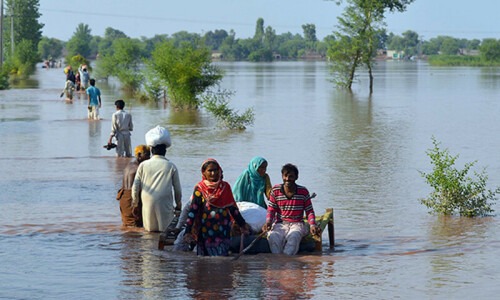LONDON: When floods swept through parts of Europe last month, the scale of the destruction surprised many. Although the intense rains were predicted by sophisticated forecasting systems enhanced with artificial intelligence (AI), the actual impact on the deluged areas was not anticipated. This discrepancy underscores the challenges of dealing with increasingly frequent extreme weather events.
Artificial intelligence has revolutionized weather forecasting by employing various statistical tools to analyze years of historical data and predict patterns at a lower cost than traditional numerical weather predictions. For instance, Google’s GraphCast, a machine learning-based method trained on reanalysis data, has outperformed traditional models. Reanalysis data involves rerunning past forecasts with modern models to create a comprehensive picture of historical weather and climate.
Experts Stress Need for Better Climate Risk Preparedness
Despite the advancements, experts acknowledge gaps in knowledge, the utilization of information, and investment in strengthening data-gathering models. Andrew Charlton-Perez, a professor of meteorology at the University of Reading, highlighted that AI models can outperform physics-based models in some cases, but not in others. The effectiveness of an AI model hinges on the quality of its input data. Limited data or frequent extreme events occurring at different times or regions make predicting weather disasters more challenging.
Communication is Key
Since January, the European Centre for Medium-Range Weather Forecasts (ECMWF) has been using the Artificial Intelligence-Integrated Forecasting System (AIFS). This model rapidly generates multiple predictions and provides long-term forecasts for weather events like cyclones and heat waves. Although ECMWF’s readings before last month’s floods were accurate, communication remains crucial. Thomas Wostal from GeoSphere Austria confirmed that their models, including ECMWF’s, accurately predicted the rainfall.
Shruti Nath, a post-doctoral research assistant at Oxford University, noted the uncertainty in predicting rare events like the recent floods, which are expected once in 150 to 200 years.
Europe Behind the Curve?
A report from the European Environment Agency (EEA) warns that Europe faces urgent climate risks outpacing policies and adaptation actions. Extreme weather conditions like heat, drought, wildfires, and flooding will worsen even under optimistic global warming scenarios. Some tech entrepreneurs, like Jonas Torland from Norway-based 7Analytics, believe Europe lacks readiness compared to the United States, where risk managers are more experienced in assessing environmental hazards.
High computing power required for running complex AI models poses another challenge, as it demands significant energy and water, contributing to climate change. Companies like Microsoft and Google are exploring nuclear power for their data centers.
Beyond refining forecasting abilities, scientists stress the need for physical solutions, such as developing areas to store floodwater safely and implementing early warning systems. Authorities should also limit development in flood-prone areas and commit to reducing emissions.
Friederike Otto from Imperial College in London emphasized that the issue lies not in data or technology but in implementation and political will



